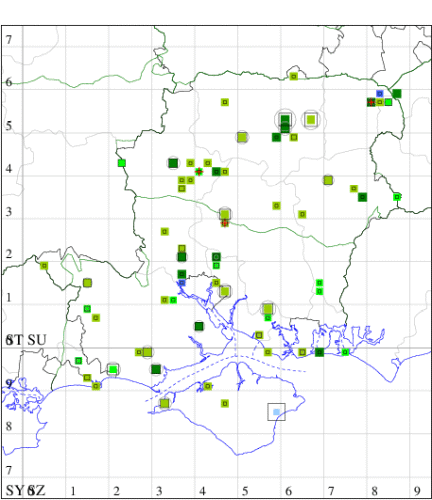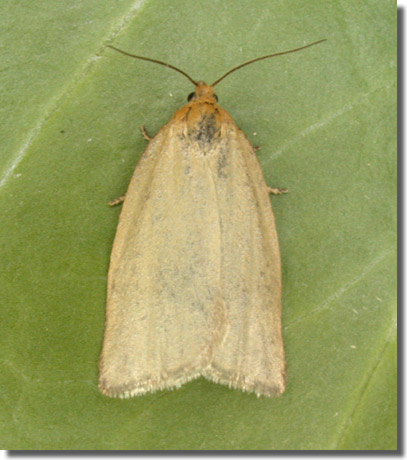Timothy Tortrix
Zelotherses paleana
Checklist Number49.031 [B&F: 0989]
Verification
Record will be accepted (subject to date and location checks)
Classification
| Family: | Tortricidae |
| Subfamily: | Tortricinae |
| Genus: | Zelotherses |
| Species: | paleana |
| Authority: | (Hübner, 1793) |
Common on rough grassland and coastal sandhills throughout the British Isles, scarcer in the north. In Hampshire and on the Isle of Wight a local and uncommon species, but widely distributed, with no apparent population centre. Wingspan 17-24 mm. Whitish or greyish ochreous forms of this species can be confused with A. unitana, but may usually be distinguished by the darker cilia of the forewing in both sexes, and by the orange-yellow suffusion on the head and thoracic region and on the basal area of the forewing, especially in the male [Bradley]; see also Bilberry Tortrix A. viburnana. Larva feeds on various grasses and herbaceous plants, living within a spun or rolled leaf.


The abundance in each month is indicated as follows:
 No records
No records Very occasional
Very occasional Irregular
Irregular Uncommon
Uncommon Off-peak, but not unusual
Off-peak, but not unusual Off-peak, but not unusual
Off-peak, but not unusual Main flight time
Main flight time| J | F | M | A | M | J | J | A | S | O | N | D | |
|---|---|---|---|---|---|---|---|---|---|---|---|---|
| Adult |  |  |  |  |  |  |  |  |  |  |  |  |
| Larval |  |  |  |  |  |  |  |  |  |  |  |  |



